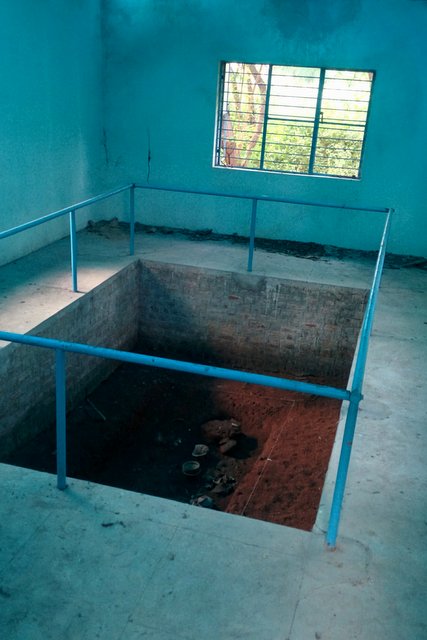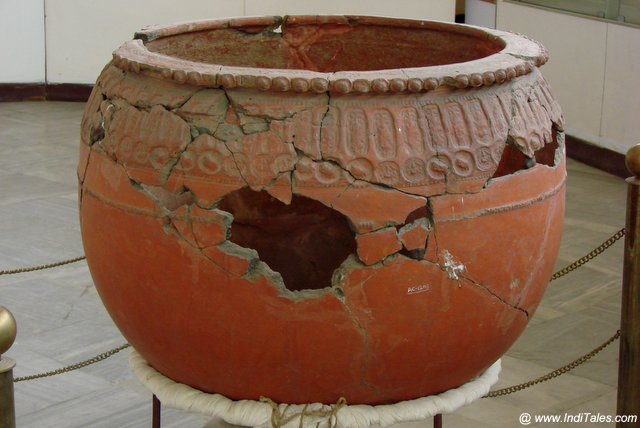When one hears the name Hyderabad, it is usually the Dum Biryani, The Irani Chai & Osmania biscuit that comes first to one’s mind. In the gastronomical sense, one would remember the Charminar and maybe the millennium-old Golconda fort. If you are a history buff, you would probably also know a little about how it all started within the city of pearls at the mud fort of Golla-Konda (Golconda) before the Islamic invasions in the late 14th century. However, predating all of this by over three millennia is a megalithic site, a stone’s throw or an eagle’s eye view away from Golconda fort, in what is now The University of Hyderabad.

Hyderabad could be understood in 5 distinct phases of growth:
1) Prehistoric
2) Pre-Islamic
3) Islamic
4) Post Independence
5) Post-Hitech City
These are the timelines of its growth. A lot of research and material is available on the latter four phases of the city. But yet, it is only a handful of University of Hyderabad academics have known and seen the first known habitations in the area around Hyderabad. The oldest megalithic site is secretly tucked away in obscurity, right under the nose of the urban sprawl today in Gachibowli.
India’s Oldest Megalithic Site
Where is this?

You can find this treasure trove within a few hundred meters of the university’s main entrance. It is within just about a hundred meters of the Old Bombay Highway in Gachibowli surrounded by the IT hub of Hyderabad. Yet, this oldest megalithic site is still tucked away into an obscure corner of the campus. Unless specifically cleared for path during the Fall semester the site and its path are hardly visible even for the trained eye. In a way, the obscurity is the site’s own security.
How old is it?
This at the University of Hyderabad is India’s oldest megalithic site. This site is also believed to be the world’s oldest iron age site when it was discovered in 2003-4 by two of the universities History professors KP Rao and Aloka Parasher Sen. Set back the iron age by good 1000 years, dating it back roughly to 2795-2145 BCE. The iron age is generally considered to be from about 1,000 BCE.

Thermo-luminescence techniques were used to date the pottery found on this site. It was first noted in 1972 and the first preliminary excavations were done by the then AP department of Archaeology, followed by the university’s own history professors.
For the untrained, megalithic can be understood as the term ‘megalith’ derived from the Greek ‘Megas’, meaning great and ‘lithos’ meaning stone. Megaliths usually refer to burials made of large stones in graveyards away from the habitation area. The site is a megalithic burial site.
Granite Menhir
Here, there is a huge 20-tonne granite Menhir at this site. Menhir again for the untrained in archaeological terms is derived from old Brittonic: Maen or men, “stone” and hir or hîr, “long. Meaning a Long stone, usually placed on a place of burial. The Menhir goes beyond 20 ft in the air and is believed to go 20 ft below the ground too to give it the strength to ground itself.

The site also is a place of 21 known burials. The site is laid out in alignment with astronomical bodies and phenomena. Black and redware pottery is the kind of pottery found on the site. One of the most significant finds at this site is a measuring jar of about 250 ML.
The archaeological excavators believe that if these are the burial sites, then the living site of the pre-historic megalithic people that created this site would lie a few kilometers south of this site. This means somewhere in the university’s south campus where civilization is usurping land in the name of development and housing /apartments.
To support this hypothesis that the south campus would in all probability house the living site of these megalithic peoples, there are enough water bodies around.

History
If one were to look for the history of and in Hyderabad, this would be the ground zero point. Technically, this would be pre-history as this is not a site that has been curated or written about. No oral or articulated records exist about this site. In the picture of the site museum (above) where excavation is left open for the visitor, one can see the usage of earthen pots and pot shards.
A point to note about this site is that this is the only Indian archaeological excavation site at a site museum.
Read More – 15 Museums to Explore in Hyderabad
Based on the artifacts found on the megalithic site it is determined that buffaloes and goats were domesticated by the peoples of this site. It is also believed that cultivated varieties of millet were their diet.
Biodiversity
This India’s oldest megalithic burial site, in addition to the hypothesized living site and the university campus itself, are all notified biodiversity reserves. The university, which is home to over 2200 acres of land is a biodiversity hotspot. It has the highest biodiversity in the state of Telangana, higher than any forest.
Fortunately, or unfortunately, the site is not readily accessible to either the university’s own students or outsiders. Annually trips are made to the site by the universities Anthropology department students. That is a part of their archaeology course for which prior arrangements are made. The site visit happens after the retreat of the southwest monsoon when the mushiness of the land slowly dries out. And becomes stable enough to clear the vegetation and redraw the path from the nearest road.
More about similar prehistoric sites of Telangana can be seen at the State Archaeology Museum in Gun-Foundry, Abids.
Guest Post
This is a Guest Post by our friend Sriram.

In the past, he backpacked in 11 countries. He was the runner-up of the GoUNESCO travel challenge in 2012. Where he backpacked 20,000 kilometers in 45 days in India, visiting 24 of the then-27 Indian World Heritage sites. He is also a runner who runs with the Hyderabad Runners. And a student of Kuchipudi Dance under Guru Smt. Bala Tripurasundari, D/O Guru Padma Bhushan Dr. Vempati Chinna Satyam. He can be reached on Twitter at @bhsriram or on Linkedin.













Thanks for sharing a great post..
The good thing about this blog is that I can relate to it myself. It is surely going to help me in my future endeavors. Keep up the good work.
Every Post from this blog each reader should read. Writer Provides very good Information about traveling, Very good work from the writer.
Thanks for sharing a great post. Very beautiful
Hi,
Firstly, a really insightful and informative post. Very well written.
I had a question for you. You mentioned 21 known burial sites near the monolith. Are there any details about who were the people buried here and why they were buried near the monolith?
In the Iron age cultures, Menhirs (Monolith stones) are placed over burials. A practice that happens even today (Tombstones.)
The inhabitation sites are speculated to be located on or around the south campus, where there has been a lot of “Development” lately, and in the future.
Hey
India is considered to be a vast nation because of its total area. Its total land area is 3,287,263 km² (approx. 1,269,214 mi²). The Continental shelf of India is approximately 402,996 km² (around 155,597 mi²). India is located in Asia. Asia is the world’s largest and most populous continent. Asian countries include, but are not limited to, Russia, China, Japan, Hong Kong, and North and South Korea.
Thanks
This is once more evidence that India is the mother of all civilizations.
Iron was in use in ancient Egypt, Roma, Greece, Sumeria, Perú and Mexico, imported from India.
Curious. old civilization really surprise our existence in past.
I am staying in Hyderabad for 2 years and I never knew about these. Thank you for the post and details.
Nice. Very interesting. Never visited this site, though I have been to Hyderabad and golconda a few times.